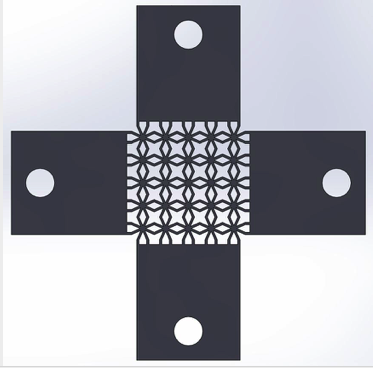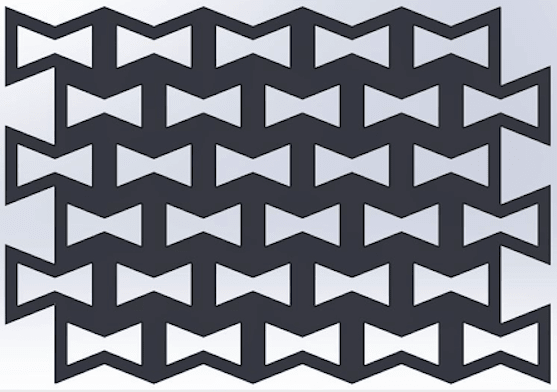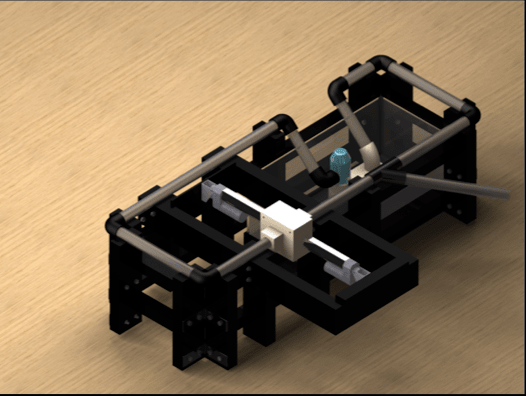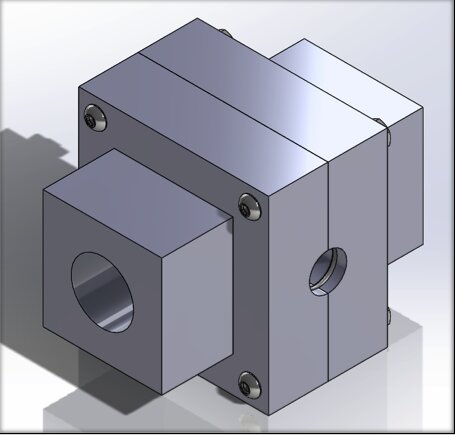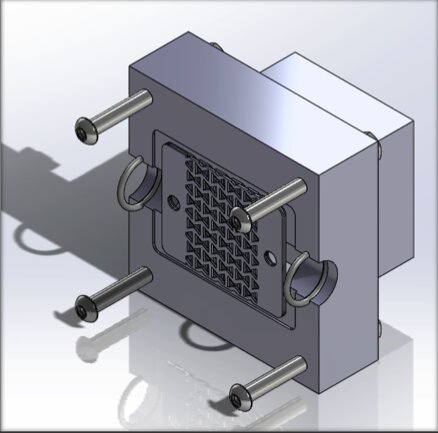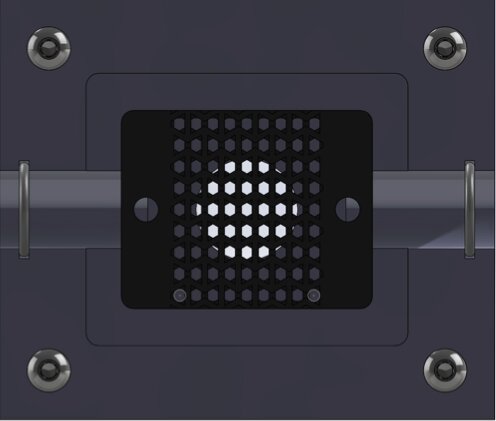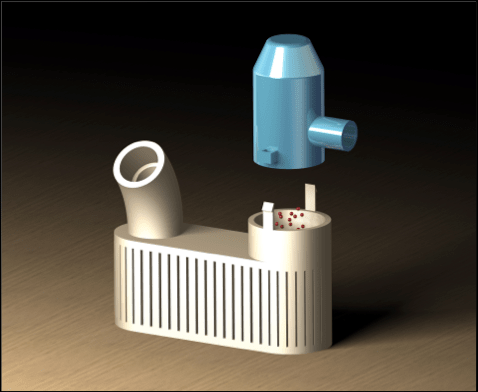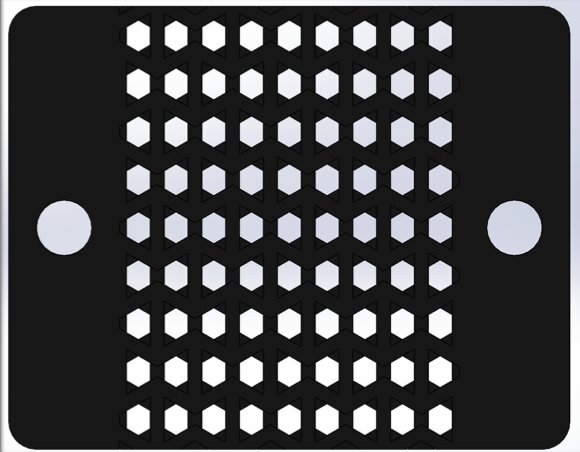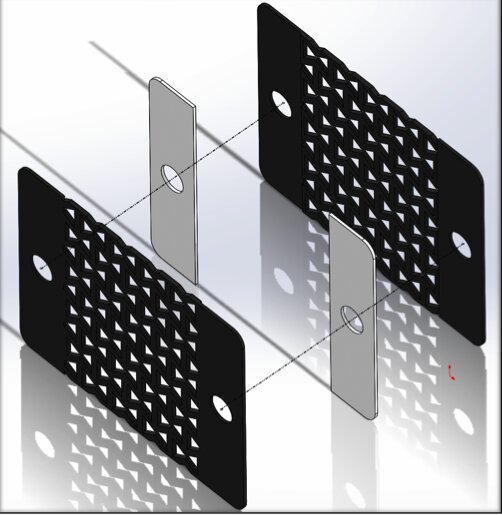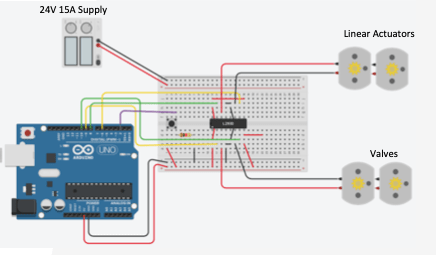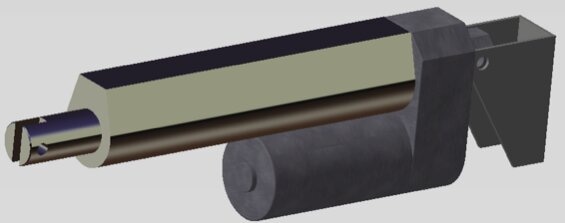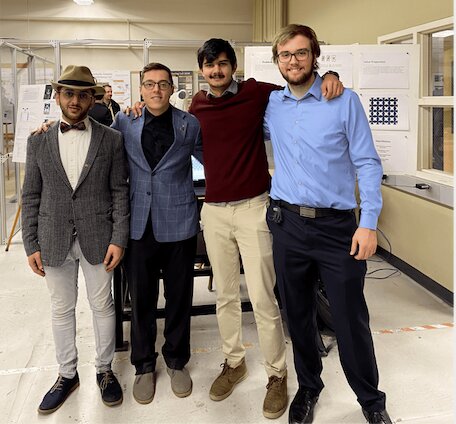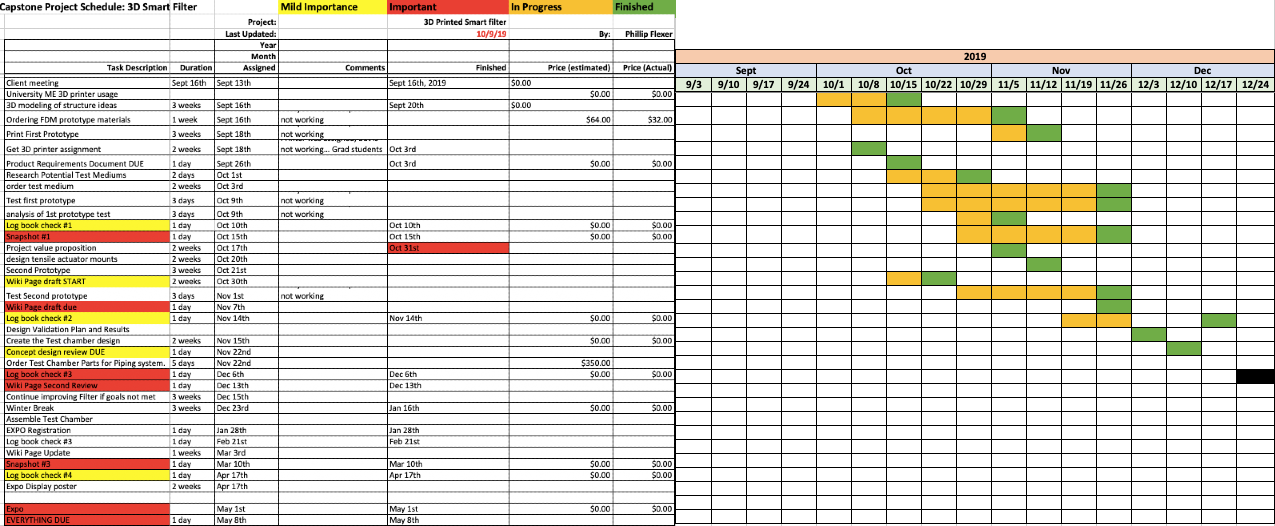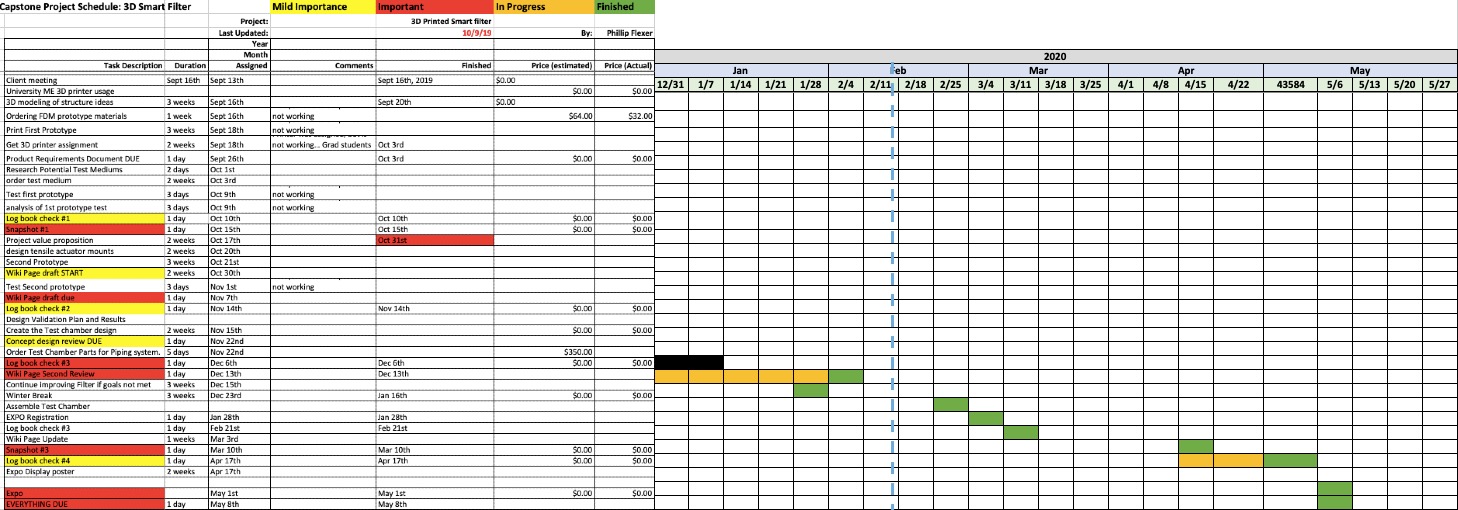3D Printer Smart Filter
| [[File:[[File:|thumb|300px|left]]|300px|center|alt=]] | |
| Sponsors | Dr. Krishnan Raja and Dr. Michael Maughan |
| Team Name | Particles Busters |
| Duration | Fall 2019 - Spring 2020 |
| Faculty Adviser |
|
| Mentor |
|
| Client |
|
| Team Members |
|
The goal of the project is to develop and improve the design of the 3D printer smart filter. indeed, the 3D printed smart filter will be a handsfree, low maintenance, and affordable, auxetic filter which can be scaled to fit various pipes and used in various configurations to provide the required filtering
Problem Definition[edit | edit source]
The 3D Printed smart filter will need to be able to filter particulates and be remotely cleaned. The 3D printed smart filter should explore the concept of a negative Poisons ratio. In other words the filter should expand and release particles trapped when a stress is applied to the filter. Exploring selective stress to pore size ratios to make a selective particle size filtered.
Background[edit | edit source]
Filtering of liquid and air is a critical industrial process; however, the disposal of filters contributes to waste in landfills since these assemblies can be difficult to recycle. Filter maintenance can also be a laborious task that does not add value to the process. For these reasons, it is desirable to develop a “smart filter” that can clean itself. The smart filter should explore the principle of a material with negative Poisson’s ratio, also called an auxetic or re-entrant material. In these cases, the filter has pores that allow the fluid to flow, but trap the desired particles. Upon application of a stress, the pores should grow, allowing the trapped particles to pass through and be collected for disposal. When the stress is removed, the filter returns to its previous filtering state but is now clean and able to trap more particles. It could also be possible to continuously vary the size of the filter pores so that the size of the trapped particles can be selected as desired. 3D printing has enabled production of designs that were not previously manufacturable. We wish to use commercial 3D printing to produce a proof of concept (POC) design of a smart filter. The project is likely to test the limits of resolution and other capabilities of the 3D printer.
Deliverables[edit | edit source]
The follow deliverables are required from the project. Deliverables marked with an asterisk are considered stretch-goals and therefore should be developed if project schedule allows.
• Smart filter POC, printed using standard 3D printer materials. The POC should filter particles smaller than 3 mm diameter, then upon application of force, allow the particles to pass through the filter thereby cleaning it.
• Version of the functioning smart filter incorporated in a typical-style filter housing.
• Reusable system demonstrating the previously described functionality. Visual inspection of system is highly desirable.
• Determination of appropriate particle media for demonstration. Water is an acceptable fluid.
• Basic mechanical characterization of the fabricated material, including Poisson’s ratio and elastic moduli in various directions.
• Final report describing in-detail the analysis of alternatives, design, fabrication, and operation of the smart filter and demonstration system.
• Smart filter capable of functioning based on stimuli other than application of force. For example, this might include, changing of temperature, application of electric potential, inputting sound energy, or application of light.
• Participation in the Idaho Pitch competition.
Design Considerations[edit | edit source]
1. Snowflake
• The snowflake has some great potential because of the large open area of the filter face.
• This comes at the cost of the strength of the connecting members of the filter face.
• The biggest problem with this design is that, even though Solid Works simulations states that this will be able to withstand 50 lbf and have the pores open up to 110% of the closed size, the 3D printers will not print this design.
• The printed prototype of this design was a tangled mess of 3D printed filament that did NOT resemble the design drawn in CAD.
• This design fails because of the inability to print this design with the thickness of the connecting members at this point.
• This design could potentially work if the connecting members of the filter face were thicker.
• Plans to make a MK2 of this filter are in the works. These plans will attempt to alleviate the printability issues of the current design.
2. Snowflake with rounded relief holes
• The rounded relief holes in this design attempt to make this filter face printable and had mild success in this regard.
• This design fails at this particle filtering size in real world practicality because of the lack of reliability and resolution in 3D printers in 2019.
• This design was printed, but all the layers were not printed in a resolution that allowed a viable filter mesh.
• In a very short test, the printed prototype broke within 2 pulls at human strength. (less than 50 lbf in an axial direction).
3. Bowtie
• The bowtie design didn’t make it past the FEA stage of development because of the large stress concentrations that are through the entire model.
• In order to fix the large stress problem, we would have filleted all reentrant corners, but this creates a new problem of not having enough displacement to open the pores correctly.
• This design had another problem that the main body of the filter face will have members connecting the bowties that are twice the thickness of the members that would be attaching the filter face to the axial force of the linear actuators.
• This design would be really easy to 3D print and to scale to a new particle size, so we will attempt to make this design work when we are printing designs out of TPU.
Project Learning[edit | edit source]
Filter mesh design
Using a design that required force from multiple axis is the easiest method in order to make a material expand in multiple directions. This goes against the purpose of the project because to make an auxetic (negative Poisson’s ratio) geometry filter, there needs to be a force acting in a single axis. There are a few auxetic geometries that were found using a quick search online. These geometries were then designed in Solid Works and tested using a simulation to see if they would expand enough to be a viable filter for the parameters of the project.
Designs:
1- Bowtie
Pros:
• Easy to find the axis to pull from.
• With correct material selection, ratio of flushing to filtering pore size is good.
Cons:
• Printability is an issue with current printer technology with too small a particle selected for filtering.
• Improper design leads to HIGH stress concentrations in the reentrant corners of the filter.
2- Spiral
Pros:
• Best flushing to filtering pore ratio.
Cons:
• Unprintable with current technology available.
• HIGH stress concentrations over whole model when simulated.
Actuation Mechanism and control
The 3D printed filter is classified as an auxetic structure. Under tension, the structure expands – in our case, the pores increase in diameter. To apply the tensile force, we chose to go with 2 linear actuators. Linear actuators are DC motors with a rotational to linear mechanism housed within. The first step in choosing the right linear actuator was determining the load each actuator would need to pull. Using solidworks FEA we determined the force to be roughly about 25lbs. The second factor was cost. To keep costs at a minimum, we opted for the most affordable one.
For the circuit and control, we chose the Arduino microcontroller, paired with a motor driver. Other alternatives to the motor driver were not capable of sustaining the high power requirement of the actuators. Since the motors don’t have built in feedback, a time based control method will be implemented for moving the actuator.
The power source for the whole system is a 24V15A power box. This was choses so we can connect the actuators in series, and have additional components in parallel. The Arduino will have its own power supply. This is done to minimize the wiring, and to avoid the risk of burning the Arduino.
Pump and pipe layout
The pump chosen is a bilge pump which will be powered with the same DC power source that will power the actuators. Based on our pipe layout, we carried out a head loss calculation and determined the chosen pump, which is the smallest bilge pump we could find, provides more than enough head.
Final Design[edit | edit source]
- Final Design Model
- Filter Housing
- Square construction for easy manufacturing
- Pipe opening sized to fit 1” nom sch 40 PVC pipe
- Standard size bolts (1/4”-20 X 31/4”).
- Custom O-rings for 20mm Linear Actuator shafts.
- Gland sizing for O-rings.
- Pin retention walls.
- Oversized filter slot.
- Particles Case
- Prevents particles from floating or sinking away from pump.
- Keeps filtrate material near the pump to limit the region of particle dispersion.
Filter Design
- Offset mesh design.
- Pull holes matching Linear Actuators.
- 3mm pore size when filtering.
- PLA cores (shown in white).
- Added rigidity.
Electronics
- Linear Actuators pull on the filter, displacing its edges for a specified time in order to achieve optimum pore expansion.
- Solenoid valves actuate. Main flow valve closes, and diversion channel opens. This enables flushing of the particles.
- After a specified time, valves and actuators return to original stand by position.
- Linear actuator.
- Retaining pin holds filter to linear actuator.
Validation[edit | edit source]
Run complete system through tests specified below
1- Filter actuation endurance
- Ensure longevity of filter life.
2- Complete filter clog flush
- Tests pump under hardest load.
- Tests filter under highest pressure differential.
3- Overpressure
- Pipe failure test
4- Electrical connection
- Ensure there is no undesired current
Team Members[edit | edit source]
| Mohammed Alqahtani |
Major: Material Engineer Hometown: Riyadh, Saudi Arabia Responsibility: Treasurer Email: Alqa1561@Vandals.uidaho.edu
|
Phillip Flexer |
Major: Mechanical Engineer Hometown:Nine Mile Falls, WA Responsibility:Computer aided design Email: Flex3311@Vandals.uidaho.edu
|
| Micheal Sanabia |
Major: Mechanical Engineer Hometown:Teton Valley, Idaho Responsibility:Project Manager Email: Sana6463@vandals.uidaho.edu
| ||
| Abhishek Rathod |
Major:Mechanical Engineer Hometown:Nairobi, Kenya Responsibility:Mechatronics Email: Rath4618@vandals.uidaho.edu |
Additional Documentation[edit | edit source]
Project Schedule
- 2019 Schedule.
- 2020 Schedule.
